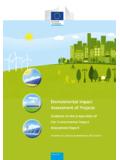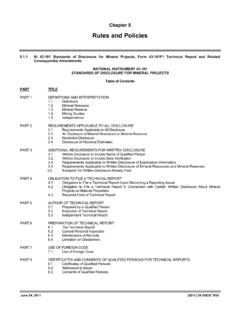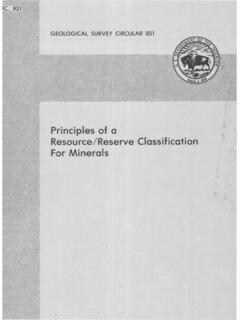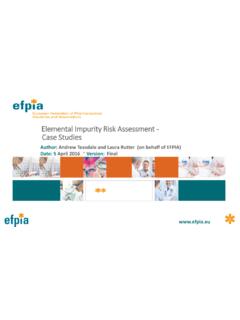Transcription of Indonesia Energy Sector Assessment, Strategy, and Road …
1 Indonesia Energy Sector assessment , strategy , AND ROAD MAP UPDATEDECEMBER 2020 ASIAN DEVELOPMENT BANKASIAN DEVELOPMENT BANKASIAN DEVELOPMENT BANKASIAN DEVELOPMENT BANKASIAN DEVELOPMENT BANKINDONESIA Energy Sector assessment , strategy , AND ROAD MAPUPDATEDECEMBER 2020 Creative Commons Attribution IGO license (CC BY IGO) 2020 Asian Development Bank6 ADB Avenue, Mandaluyong City, 1550 Metro Manila, PhilippinesTel +63 2 8632 4444; Fax +63 2 8636 rights reserved. Published in 2020. ISBN 978-92-9262-510-8 (print); 978-92-9262-511-5 (electronic); 978-92-9262-512-2 (ebook) Publication Stock No. TCS200429 DOI: The views expressed in this publication are those of the authors and do not necessarily reflect the views and policies of the Asian Development Bank (ADB) or its Board of Governors or the governments they represent.
2 ADB does not guarantee the accuracy of the data included in this publication and accepts no responsibility for any consequence of their use. The mention of specific companies or products of manufacturers does not imply that they are endorsed or recommended by ADB in preference to others of a similar nature that are not making any designation of or reference to a particular territory or geographic area, or by using the term country in this document, ADB does not intend to make any judgments as to the legal or other status of any territory or work is available under the Creative Commons Attribution IGO license (CC BY IGO) By using the content of this publication, you agree to be bound by the terms of this license.
3 For attribution, translations, adaptations, and permissions, please read the provisions and terms of use at # CC license does not apply to non-ADB copyright materials in this publication. If the material is attributed to another source, please contact the copyright owner or publisher of that source for permission to reproduce it. ADB cannot be held liable for any claims that arise as a result of your use of the contact if you have questions or comments with respect to content, or if you wish to obtain copyright permission for your intended use that does not fall within these terms, or for permission to use the ADB to ADB publications may be found at : In this publication, $ refers to United States design by Cleone Baradas.
4 Printed on recycled paperiiiContentsTables and Figure ivAcknowledgments vAbbreviations viWeights and Measures viCurrency Equivalents viSector assessment : Context and Strategic Issues 1 Introduction 1 Overall Sector Context 1 Energy in Focus 2 Institutional Context 6 Core Sector Issues 8 Sector strategy 22 Government strategy , Policy, and Plans 22 ADB Sector Support Program and Experience 23 Other Development Partner Support 24 ADB Sector Forward strategy 26 Energy Sector Road Map and Results Framework 28 Appendix: Problem Tree for the Energy Sector 29ivTables and FigureTables1 Network Development Planning 122 ADB Major Public Sector Projects in Indonesia Since 2016 233 ADB Major Private Sector Projects in Indonesia Since 2016 234 Major Development Partners and Programs 2016 2019 24 Figure1 Primary Energy Supply, 2019 4vAcknowledgmentsThe report was written by Florian Kitt ( Energy specialist, Energy Division, Southeast Asia Department) and Kelsey Yates (consultant, ADB).
5 Additional guidance and support were provided by Toru Kubo (director, Energy Division, Southeast Asia Department). Additional support was provided by Divya Nawale (consultant, ADB). The team wishes to thank Yongping Zhai (chief, Energy Sector Group, Sustainable Development and Climate Change Department) as the report s peer team wishes to thank the Ministry of Energy and mineral Resources, BAPPENAS, PT PLN, and development partners for data and inputs during the preparation of the report . The team also thanks colleagues from the Indonesia Resident Mission and the Department of Communications for their Toru Kubo, Energy Division, Southeast Asia Department (SERD)Team leader Florian Kitt, Energy specialist, SERDTeam member Jeffrey Almera, senior operations assistant, SERDPeer reviewer Yongping Zhai, chief, Energy Sector Group, Sustainable Development and Climate Change DepartmentviAbbreviationsADB Asian Development BankASR assessment , strategy , and road mapBAPPENAS Badan Perencanaan Pembangunan Nasional (Ministry of National Development Planning)
6 CO2 carbon dioxideCOVID-19 coronavirus diseaseCPS country partnership strategyESCO Energy service companyGDP gross domestic productIPP independent power producerKEN Kebijakan Energi Nasional (National Energy Policy)LED light-emitting diodeLNG liquefied natural gasLPG liquefied petroleum gasMEMR Kementerian Energi dan Sumber Daya mineral (Ministry of Energy and mineral Resources)MOF Ministry of FinancePPA power purchase agreementPPP public-private partnershipPLN Perusahaan Listrik Negara (State Electricity Corporation)RPJMN Nasional Rencana Pembangunan Jangka Menengah (National Medium-Term Development Plan)RUEN National Energy PlanRUKN Rencana Umum Keternagalistrikan Nasional (National General Plan for Electricity)RUPTL Rencana Usaha Penyediaan Tenaga Listrik (Electricity Power Supply Business Plan)SOE state-owned enterpriseWeights and MeasuresGW gigawattMVA megavolt-ampereMW megawattTWh terawatt-hourCurrency Equivalents (as of 24 November 2020) Currency unit rupiah (Rp) = $ $ = assessment .
7 Context and Strategic IssuesI1 IntroductionThis Energy Sector assessment , strategy , and road map (ASR) updates the state of the Energy Sector in the Republic of Indonesia since the 2016 publication of Indonesia Energy Sector assessment , strategy and Review by the Asian Development Bank (ADB). This ASR aims to provide background information and an overview of past and ongoing successes and constraints in ADB development areas in order to support investment and technical assistance operations in Indonesia s Energy Sector . This will assist in following ADB s country partnership strategy (CPS) for Indonesia . The CPS sets out the principles for the assistance and partnership between ADB and the Government of Indonesia .
8 The CPS is aligned with the government s policies and priorities in its National Medium-Term Development Plan (RPJMN), 2020 2024. It focuses on three strategic pathways: (i) improving well-being; (ii) accelerating economic recovery; and (iii) strengthening resilience. Indonesia has identified knowledge needs in these areas, including transformative strategies for recovery from the adverse impact of the coronavirus disease (COVID-19) pandemic and building resilience to exogenous shocks. Furthermore, the ASR draws upon ADB s strategy 2030, which outlines a framework for ADB s overall Sector Context Indonesia is a large archipelago comprising more than 17,000 islands, which stretch 5,000 kilometers across Southeast Asia and Oceania.
9 Indonesia shares land borders with Papua New Guinea, Timor-Leste, and Malaysia, and maritime borders with Singapore, the Philippines, and Australia. With an estimated population of 269 million, Indonesia is the fourth most populous country in the More than half the population lives on the island of Java, where economic activity is concentrated, while the rest is spread across Sumatra, Bali, Sulawesi, Kalimantan, Nusa Tenggara, Maluku, Papua, and about 6,000 smaller inhabited islands. Indonesia has successfully reduced the extreme poverty level from in 2015 to in 2019, but the country s island geography makes sustainable economic and infrastructure development challenging in outlying provinces, resulting in persistent regional 1 ADB.
10 2018. strategy 2030: Achieving a Prosperous, Inclusive, Resilient, and Sustainable Asia and the Pacific. Statistics Indonesia . 2020. Total Population Projection Result by Province and Gender (Thousand People), 2018 2020. ADB. 2020. Poverty Data: Indonesia . assessment : Context and Strategic IssuesI2 Indonesia Energy Sector assessment , strategy , and Road Map Update 2020 Indonesia is the largest economy in Southeast Asia and the seventh largest global economy in terms of purchasing power. Indonesia s gross domestic product (GDP) has increased steadily at approximately 5% per year from billion in 2015 to more than Rp1 trillion in Commodity and agriculture production has traditionally driven economic growth.

















